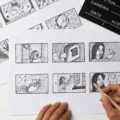
In the rapidly evolving world of photography, new technologies are playing a pivotal role in enhancing the quality and creativity of images. One such breakthrough technology is AI photo editing, which has opened up a realm of possibilities for photographers looking to elevate their work. This article explores various ways photographers can use new technology to enhance their images, pushing the boundaries of what’s possible in photography.
1. AI-Powered Image Enhancement
AI photo editing software is revolutionizing the way photographers approach image enhancement. These tools use advanced algorithms to automatically adjust various aspects of an image, such as exposure, color balance, and sharpness, ensuring optimal results. This technology is particularly useful for correcting common issues like underexposure or color cast, saving photographers hours of manual editing. AI can also upscale images without losing quality, making it possible to enlarge photos for larger prints or digital displays while maintaining their clarity and detail.
2. High Dynamic Range (HDR) Imaging
HDR imaging is a technique that combines multiple exposures of the same scene to create a single image with a wider range of tonal detail. This is particularly useful in scenes with high contrast, where it’s difficult to accurately capture the brightest and darkest parts in a single shot. New tech has simplified the HDR process, enabling photographers to easily merge these exposures with precision, resulting in images with rich details in shadows and highlights. The outcome is a more dynamic and visually striking image closely resembling how our eyes perceive the world.
3. Computational Photography for Creative Effects
Computational photography refers to using digital processing techniques to enhance or extend the capabilities of traditional photography. This includes techniques like focus stacking, where multiple images at different focus distances are combined to create a photo with a greater depth of field. Other computational techniques include light field photography, which allows photographers to adjust focus and depth of field after the photo has been taken. These advanced techniques empower photographers to create previously impossible images or require highly specialized equipment.
4. Drone Photography for Unique Perspectives
Drones have opened up a new world of possibilities in photography, allowing photographers to capture images from unique angles and perspectives. Drone photography is beneficial for landscape and architectural photography, where an aerial view can reveal patterns, shapes, and compositions that aren’t visible from the ground. Newer drone models come equipped with high-resolution cameras and advanced stabilization features, enabling photographers to capture sharp and detailed images even from high altitudes.
5. Utilizing Time-lapse and Slow-motion Techniques
Time-lapse and slow-motion photography can add a dramatic effect to images. Time-lapse photography involves taking a series of photos at set intervals and combining them to show changes over time, such as a sunset or the movement of clouds. On the other hand, slow-motion photography captures fast-moving subjects, like wildlife or sports action, at high frame rates, revealing details that are usually missed by the naked eye. New camera technologies and software have made these techniques more accessible to photographers, allowing them to experiment and create visually compelling images.
Integrating new technology in photography has provided photographers with an array of tools to enhance their images. From AI-powered image editing to HDR imaging, computational photography, drone photography, and time-lapse/slow-motion techniques, these advancements are expanding the creative possibilities in photography. According to Adobe, you can “Make any creative vision reality while keeping complete control over every concept with Adobe Firefly generative AI in Photoshop.” As technology continues to evolve, photographers have more opportunities to experiment, innovate, and create breathtaking images that push the limits of traditional photography.

